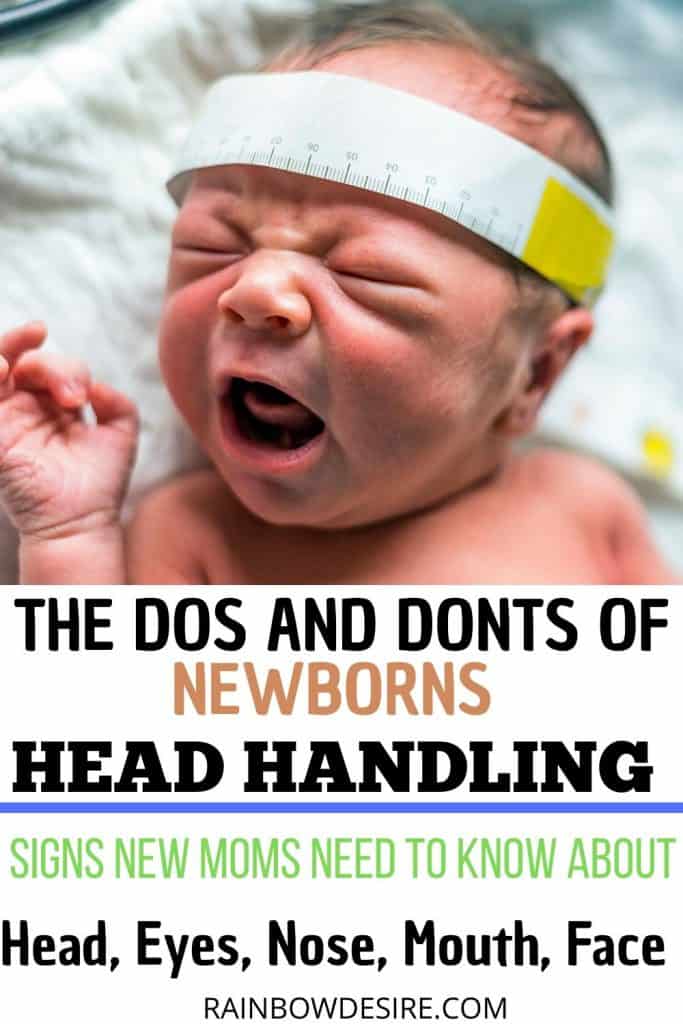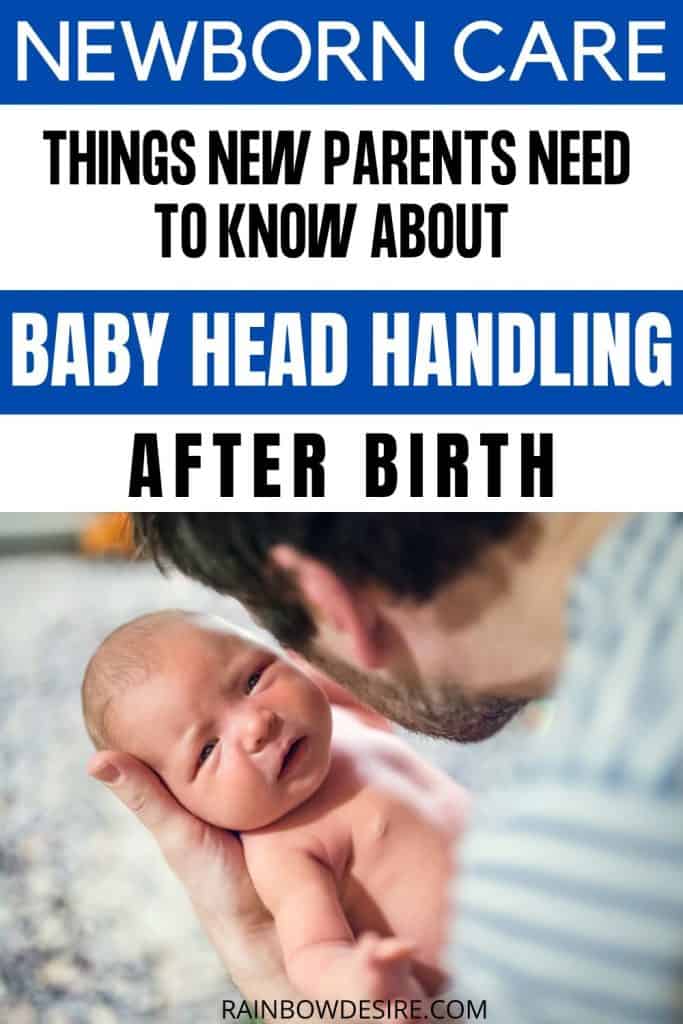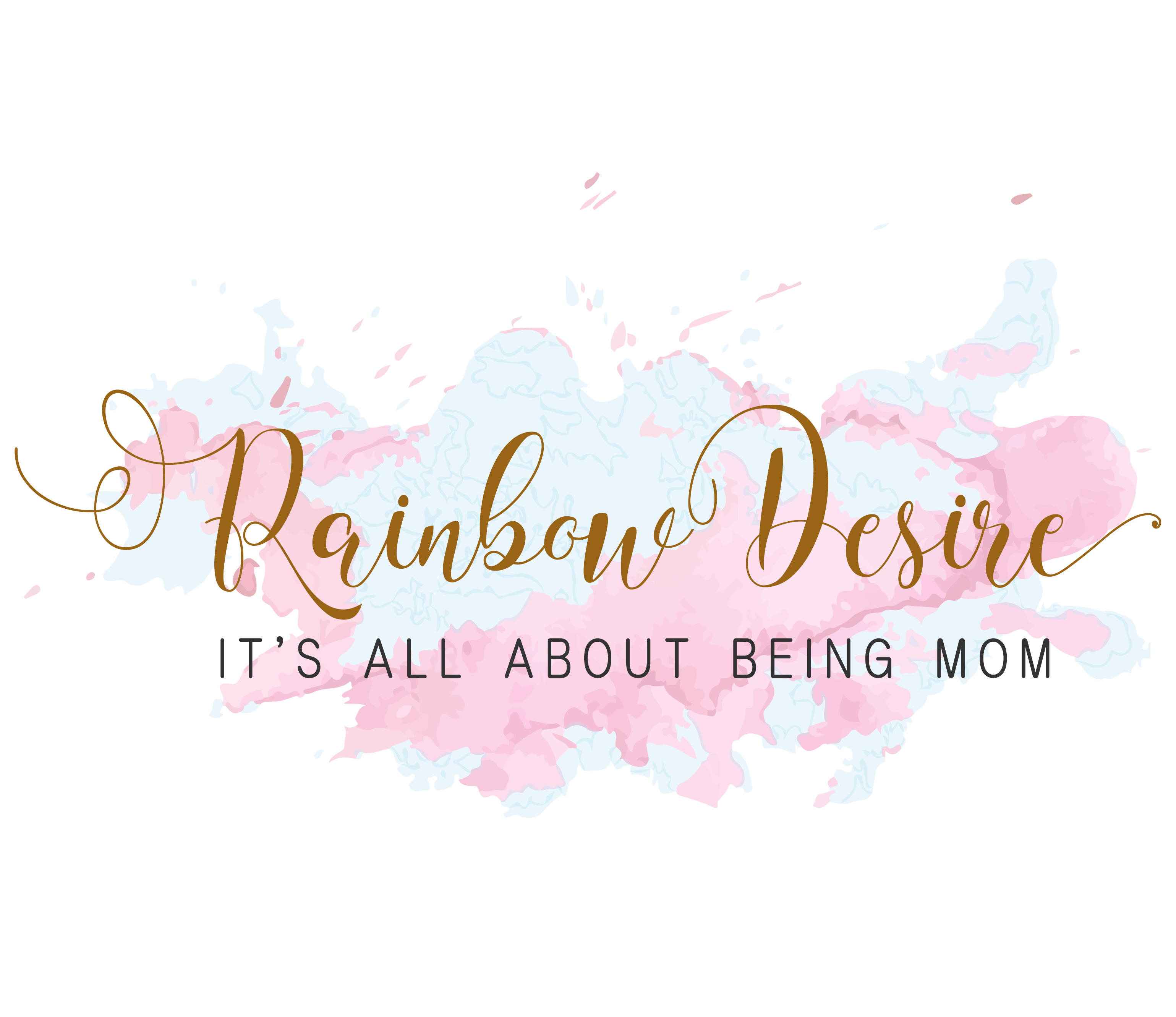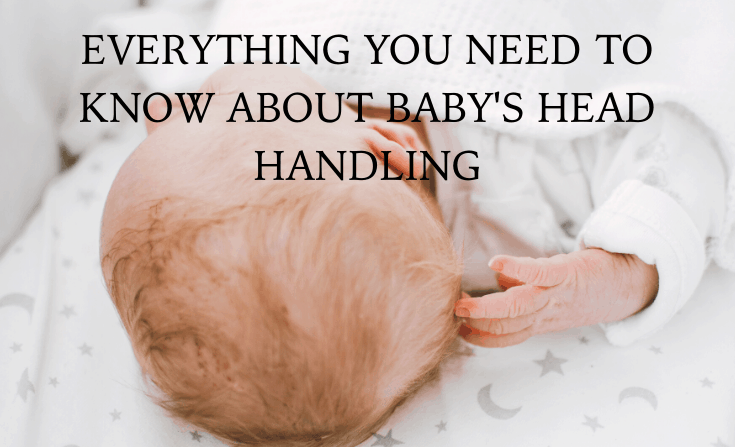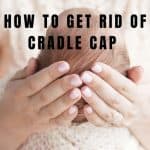Newborns heads are proportionately larger than the rest of their bodies when they are born. Gradually in a matter of a few months, the baby grows at a rapid pace so her head gets proportionate to her lower body fairly quickly.
Babies are born with a soft head naturally so that it can compress or overlap to fit through the birth canal. The shape of a baby’s head is not always picture-perfect. Some babies get cone-headed while making their way through the birth canal.
If you run your fingers over your baby’s skull, you may feel ridges along with the areas where the bony plates of the skull have overlapped. Coneheads are quite typical.
However, this does not mean their head is going to stay the same for life. Fortunately, over the next several weeks baby’s skull bones round up and the ridges will disappear. Baby’s head will shape up with time and you have to make sure your baby is not spending too much time on her back. This might lead to the flat head syndrome.
This post may contain affiliate links. Please read our disclaimer for more information.
Everything about Newborn’s Head, Face, Eyes, and Nose, handling
As a new parent, you need to be super careful while holding a baby. Always support the baby’s head with a hand underneath supporting both the head and the neck for the first couple of months at least. Soon the baby would know how to balance her head all by herself.
The soft spot
Soft spot generally known as fontanelles are normal gaps that allow the baby’s brain to grow rapidly throughout the next year.
Parents need to be gentle when touching the fontanelles on everyday handling. You may notice pulsating soft spot which is normal meaning the visible pulsing of blood.
Also, parents need to keep a close eye on sunken soft spot indicating dehydration combined with poor feeding and dry diapers.
Heads Coverup
The real reason why baby’s heads are covered with hats is, newborns tend to lose a significant amount of heat from their heads if not covered, more quickly than adults. This is why it is recommended to have a hat over the baby’s head at least for the first few weeks.
Baby’s hair
Your newborn may be born with a head full of hair or no hair, however, there is a possibility of hair thinning out significantly in the next few weeks and then the real hair coming back.
Cradle cap
Babies tend to develop cradle cap on their heads, typically seem like a thick dandruff layer. Although it is not harmful and itching may take its toll leaving parents worried.
The solution to dealing with cradle cap is massage baby’s scalp with oil and then scrape off gently with soft bristles comb.
The good news is, in many cases cradle cap is gone within a few months even If you leave it on its own.
Learn how to get rid of cradle cap fast.
What is Flathead syndrome?
Babies may develop flat heads or flat spots due to constant pressure on their heads while they are on their backs. The biggest challenge of being a parent is to ensure a perfect balance in almost everything you do with your baby.
While it is essentials for babies to be on their backs for better head shape as most of them are born with elongated heads; it is also very important to make sure the baby’s head is shaping up nice and round, and not developing any flat spots.
Care instructions every parent must know about the baby’s head shape
Try to lay down your baby on his back, not on the side. However, if you are laying him down on the side then make sure it is not always the same side. You need to keep flipping sides. As it may lead to flat spots on one side and not on the other.
Moreover, practicing tummy time is helpful in avoiding flat head in babies, once the umbilical cord is detached.
Using a head shaping pillow (supervised) to avoid flat head if the baby is on her back most of the time, while in the car seat or on a play mat.
If you notice flat spots on the baby’s head, talk to your doctor about Plagiocephaly. In most cases, the baby may need a helmet therapy that it is very effective in treating deformities diagnosed as early as possible.
Baby’s eyes and everything related
Baby’s vision develops with a time frame of 3 to 5 years. Newborns can see fairly hazy to 8 to 12 inches and then within 3 months, they can not only see you also they are able to follow objects.
Newborns can see in contrast to colors like black, white and red. Sooner they are getting to see every color of nature.
This is why Newborns’ books are in black, white and red contrasts.
Babies may look like they are cross-eyed
Parents may notice their newborn appear cross-eyed on some occasions. They should develop better eye control muscles fairly quickly. However, if you are still noticing any different eye movements in your baby’s eyes, do not hesitate to talk to your child’s pediatrician.
No tears for newborns
Newborns do not shed a tear while they cry for the first couple of months. However, premature babies reportedly produce enough tears to coat and lubricate their eyes. In reality, the amount of tears newborn make are not enough to roll down for the first few months.
What is Blocked tear duct
Although block tear duct is a situation you might notice in your newborn. Newborns have tiny tear duct in the inner corner of the eyes that plays an important part in functioning drainage.
Discuss this with your pediatrician and follow her advice on the treatment.
Baby’s nose
A baby’s nasal passage doesn’t develop and open up the way It is supposed to be. However, they are obligated to breathe through their narrow little nose for about 3 to 6 months. This makes newborn breathing noisy due to dryness and stuffiness.
Sneezing is normal for babies
Newborns tend to sneeze a lot and it is another normal thing about babies. Most babies outgrow this tendency of sneezing to the slightest tickle within a few months.
The best thing is to use saline drops to fight off the dry stuffy nose.
Bulb suction or Nose Frieda nasal aspirator: using bulb suctions or nose Frieda in case of sick days and really stuffy congestion. Most of the time, hospitals provide you with bulb suctions as they are frequently used at the hospital to suck out any liquid from the baby’s mouth.
Using a humidifier for dry rooms or dry environments can significantly improve baby’s sleep as well as in her sick days makes breathing fairly easy.
Find out what are the essentials you must-have for everyday discomforts or baby’s sick days’ cabinets.
Baby’s Mouth
Parents may notice some things about the baby’s mouth and it is always better to discuss it with your child’s care provider.
White clear bumps
You may notice white clear bumps inside the baby’s mouth on lips, gums.
Newborn or natal teeth
In rare cases, newborns are born with too early teeth. If you notice something like this, you may have to get them removed.
Sucking blisters
Babies may develop blisters inside their mouths due to frequent sucking. The good news is, sucking blisters will eventually go on their own.
White coating
You might notice white coating inside the baby’s mouth probably due to formula or milk residue in the baby’s mouth. Despite some cases, it could be thrush and need to be discussed with the care provider.
What is Thrush
Thrush is caused by a type of yeast called Candida Albicans that is found in the intestinal tract and is responsible for some diaper rashes also. This type of yeast spread inside the mouth and keeps coming back.
Besides, liquid yeast medication is one of the solutions, also a purple staining solution is suggested in the worst cases of thrush.
The best practice as a parent is to always discuss with your pediatrician if you notice anything inside the baby’s mouth.
Furthermore, for the bump rash, here are the remedies that work wonders.
What is Tongue-tied
Tongues are connected with a little tissue frenulum with the floor of our mouth. We are all born with frenulum but for newborns, this is extended to the tip of the newborn’s tongue.
Although this condition is harmless and generally requires no treatment. However, for some, it makes latching on breasts difficult that may lead to a small procedure to fix it.
Baby Acne
Babies tend to get tiny bumps on their face called baby acne. You do not need to apply anything on the baby’s face. Just wash and gently wipe dry. These acne bumps will most likely go away in a few days. If otherwise do not hesitate to talk to your pediatrician about it.
Many moms tried using breastmilk and have noticed significant recovery. The best thing to do is, do not use anything but breastmilk if you wish.
That being said, the timeline for baby acne to go away is at least a couple of weeks for most cases.
As a new mom, you must know these 22 facts before having a baby.
Also, you may want to know what happens at the hospital during childbirth stay.
Newborn mistakes new moms must avoid.
70+ Newborn care tips for new overwhelmed parents.

